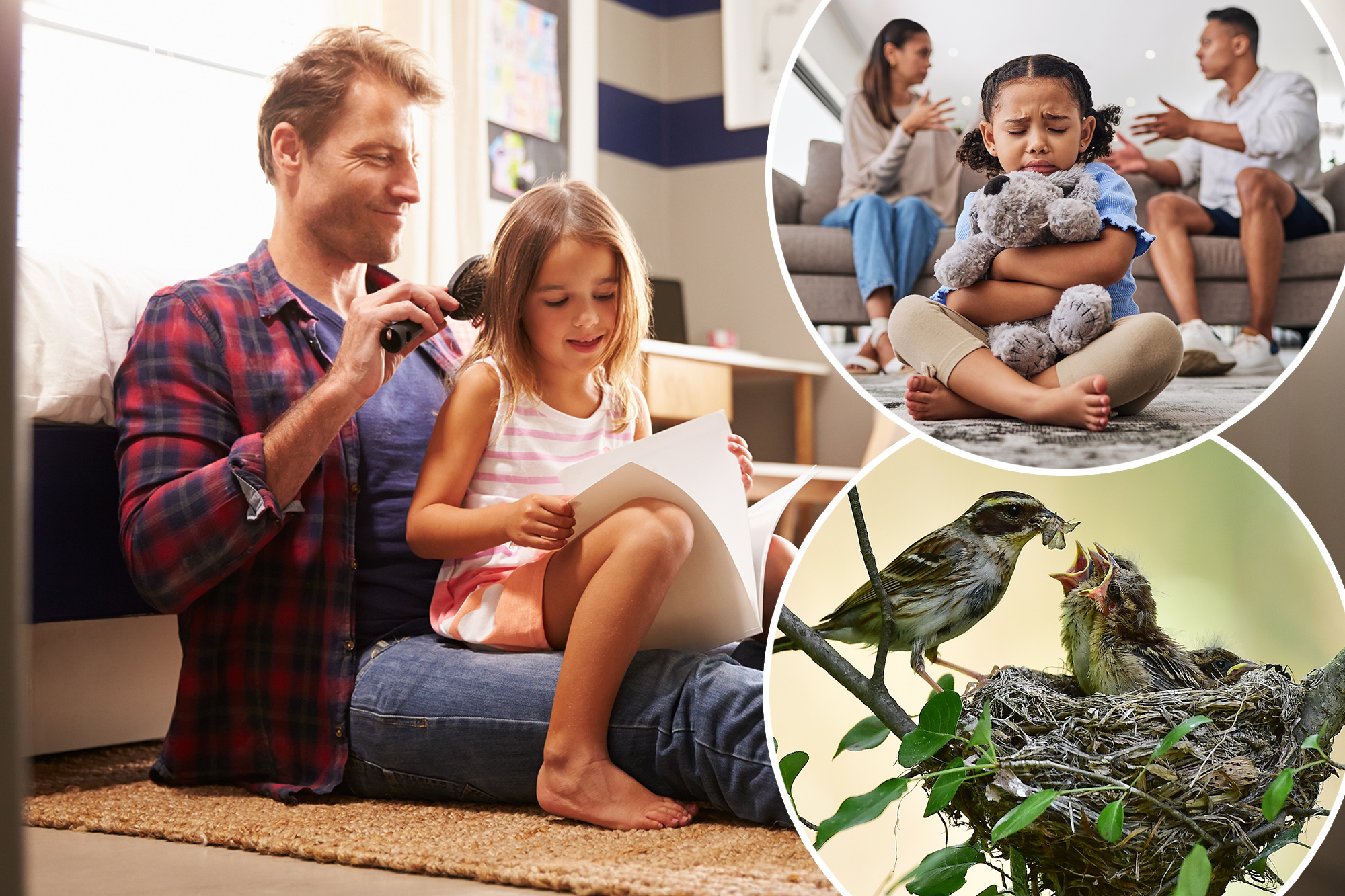
Who says you can’t have your nest and leave it too?
A divorced couple in the state of Washington is going viral for their unconventional custody agreement – and surprisingly harmonious – known as “Birdnestting”.
Devin Justine and Brendan Cleary, both 33, decided to complete their eight -year marriage when Justine was six months pregnant with their second child.
Despite the heart attack, they agreed on one thing: children must come first.
“I came to Brendan and said,” I hate you now, but we have to join our heads and think outside the box how we will do this job for our children, “” Justine told tooday.com. Cleary was “100% on board”.
Their solution? Let the children stay in the family home while the parents rotate in and out – just like the birds returning to the nest.
When Cleary, a firefighter, is on duty or outside the nest, it sleeps at the station. Justine stays with her parents nearby.
They are currently building a garage apartment so that they can continue to get the curves on the same property-luggage or back and forth shaking for children.
@Devin.justine They are their home. We just have to live in it. Parents leave and children stay. For now our mindset is, they didn’t ask for that. They did not choose to be born into a family that fell out of love with themselves. So we as parents have the opportunity at this time in their lives to do what we can to maintain their childhood among all this. Weekdo week is a little different and fortunately we have a system currently that can support this lifestyle. Their father agreed after separation I would be the one who raises children while they are young. I agreed to work practitioners about his shift schedule so that he could maximize his time available with them. Again this is not for everyone. This is not forever. But for us it works and as long as we work to save it. Does it make our personal life more complicated, sometimes. 🙃 But it’s all manable. I personally feel so much peace in this season of my life. I know that God has a long -term plan for this family, where life will be a little easier and less complicated. So for now I trust this. I am confident that he has a plan and I can spend this season enjoying my babies. #Coparenting #divorcedeedyiarias #qimenting #breakingGerationalcurses
Sound original Sound – ° ˖✧˖✧talia✧˖ °
“I’m a divorce product. I spent my life living outside a suitcase and there was no way we could ask our children to do the same,” Justine said. “Kids want to sleep in the same bed every night.”
The nest access may not be new, but it is gaining attraction between co-parents seeking to limit their emotional whip to children after divorce.
“There is little rift for children. They are not being affected [environmentally] With the fact that their parents are separating, ”Sherri Sharma, partner in Aronson, Mayefsky & Sloan, LLP, a Manhattan’s legal firm for NBC News.
She noted that many nest parents share a small apartment abroad to exchange between Stints in the marriage house. But this is not an adjustment forever, the pro warned.
“I’ve never seen” nest “continue forever,” Sharma said. “A few months is okay, but for longer periods (beyond six months), I think the uncertainty not to know how it will really have to have separate houses can be confusing or anxiety-[inducing] for children. ”
Dr. Fran Walfish, a Beverly Hills -based psychotherapist and author of the conscious parent, agreed, capturing a successful nest phase in three months max.
“Painful news shock for children has been mitigated by a short transitional period in which children’s environmental surroundings remain the same and the only difference is the presence of one parent or the other,” Walfish said at the exit.
He added that “every longer” risks “giving your children an incorrect message that [the parents] are working for reconciliation. “
Celeste Viciere, a licensed mental health clinic, sees value in the nest – up to a point.
“Having children live in the same home that is known to them can be useful because it is easier to stay in the same school and keep the same group of friends,” Vicer also told the site.
“Another overthrow of the nest is that children do not have to lift their things back and forth between the two countries,” she continued.
But she also warned of emotional obstacles: “Children can struggle to have amazing family memories at home, but feel unable to share them together. This can also lead to a false sense of reality, where they become hopeful that their parents could come back together.”
Shelley A. Sentterft, a former family lawyer turned into therapist, told the network that common living deals can lead to dissatisfaction with everyday things – as a parent using homemade items without replacing them.
Still, she noted, some groups of short -term nests do work.
“The only cases I am aware of in which parents have done nest work is when done on a very limited basis … and when parents have had a very friendly divorce,” she said.
Despite the dangers, Justine and Cleary said they are making it functioning through open communication and strong borders.
“We didn’t have it [respect] When we were married, but we have it now, “Justine said today.” We have joined for our children. “
And the experts agree: however parents decide to split, they should always put their first children.
“No matter how you decide to divorce, being aware of the potential effects for your children is essential,” Viciere said.
“Children tend to already have an idea of what is happening … Let them ask questions and have conversations about how they feel about what is happening.”
#Birdnestting #custody #tendency #divorced #parents
Image Source : nypost.com